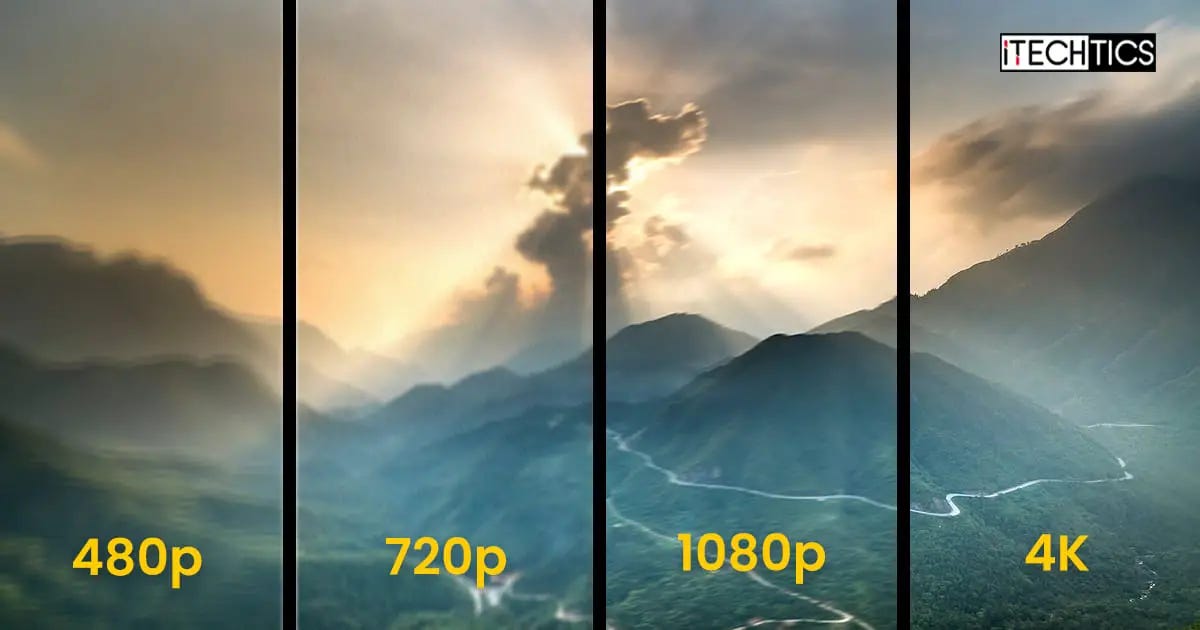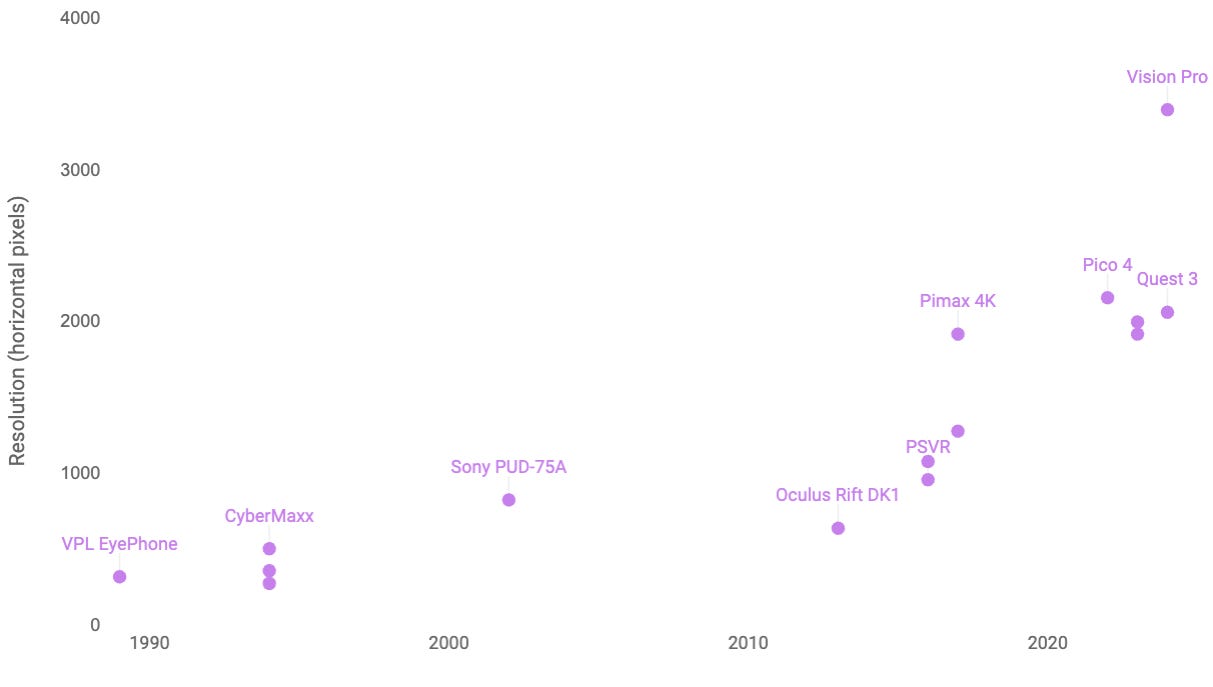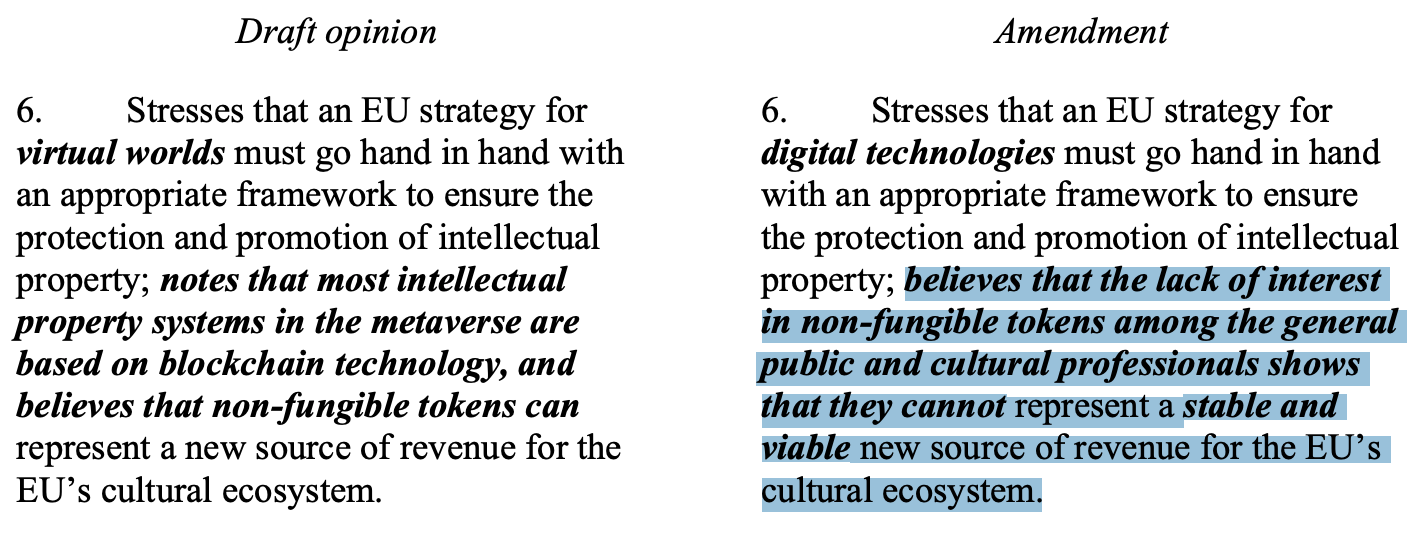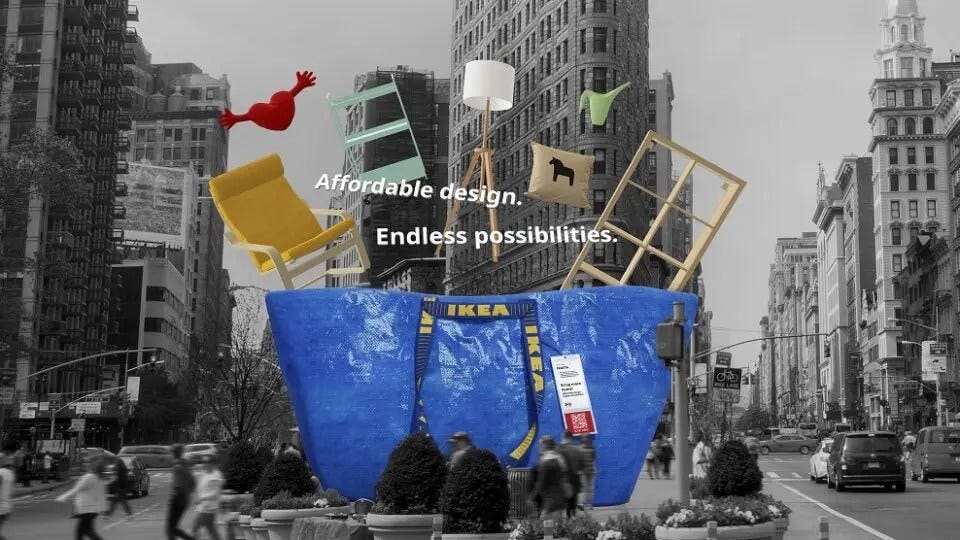The physical and virtual world are blending in surprising ways, from BMW’s augmented reality displays to Abba reuniting onstage through digital avatars (“Abba-tars”) to fashion retailers dropping augmented reality “wearables.”
Still—if asked to picture the “metaverse,” most will imagine a virtual reality headset. For good reason: headsets are the most comprehensive window into the virtual world.
Just 5 years ago, most of a headset’s hard work was outsourced to a computer or console. Today’s wireless headsets take care of everything in-house.
Owing to built-in cameras, headsets now also boast “mixed-reality” viewing, which provides users the option to see the physical world (“passthrough”,) and eye tracking that—among other benefits—lets users control virtual spaces without controllers.
There are three other important ways headsets have evolved and will continue to.
Resolution
The principal metric for realism is resolution: the number of pixels in a display. Typically, vertical pixels determine quality. So, a TV boasting a 1920 x 1080 (pixels) display indicates a resolution of “1080p” (the “p” represents format.)
But standards that use horizontal pixels have started to prevail. Hence, a “4K” display typically has dimensions of 3840 x 2160.
Today’s headsets project around 1000 horizontal pixels to each eye, doubling standards set just 7 years prior.
Apple then astonished many in June by claiming its Vision Pro will “deliver more pixels than a 4K TV to each eye,” thus setting a new standard for mainstream devices (a lesser-known Pimax headset achieved a comparable resolution in 2020.)
Refresh rate
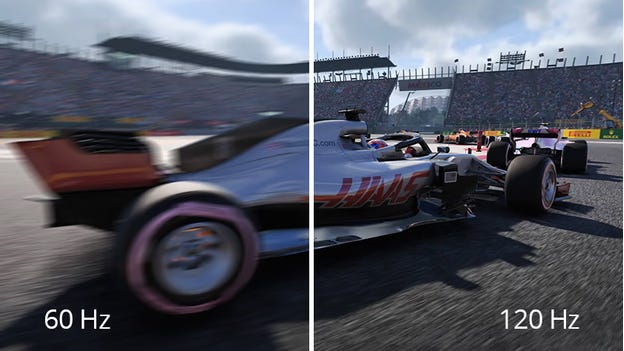
Rather than adding more pixels to improve quality, a video can refresh its image more frequently. Refresh rate—measured in hertz (Hz)—is a kind of temporal resolution. A video that refreshes 60 times per second (90 Hz) will appear smoother than one that refreshes 30 times per second.
Low refresh rates were a major contributor to the feeling of motion sickness that plagued users of earlier headsets. Today’s headsets operate on or above 90 Hz to tackle this. Yet higher refresh rates will create smoother, more realistic imagery.
Field of view
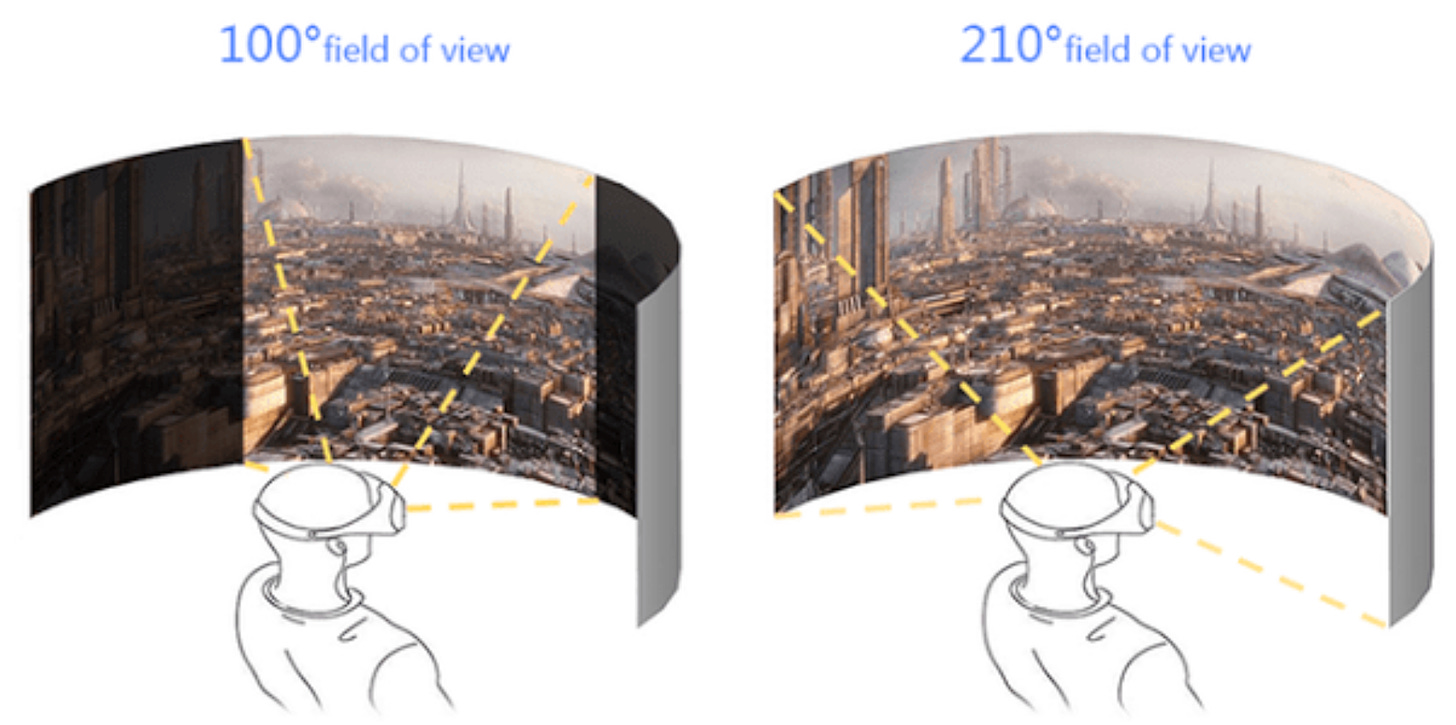
Headsets present only a window of vision from that available. Humans can observe around 200-220° horizontally and 130-135° vertically. Field of view measures the extent to which this observable world can be seen through headsets.
The closer headsets get to achieving the human maximum, the more users will feel they are inside an experience rather than that they are watching it.
Today’s headset offers experiences far below this maximum. For example, Meta’s Quest 3 will have a field of view of 97°. One to watch: Pimax claims its next headset will project across the entire human field of view.
Headsets compared
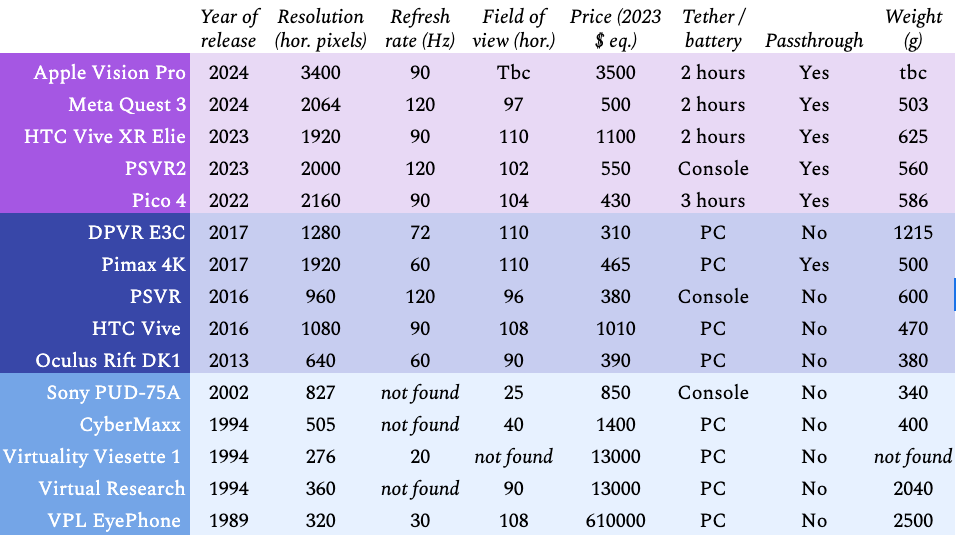
Into the EU metaverse…
Policy
Parliament
Internal Market and Consumer Protection Committee (IMCO)
The Culture Committee and Education published 64 amendments to their original suggestions.
A neat summary by Gianluigi Vona.
IMCO & EPP’s Pablo Arias Encheverría 🇪🇺🇪🇸 and Patrick Grady 🙋♂️ spoke to Parliament’s Digital Markets Act Implementation Working Group about the upcoming challenge of the metaverse.
Legal Affairs Committee (JURI)
As previously rumoured, EPP’s Axel Voss 🇪🇺🇩🇪 and S&D’s Ibán García del Blanco 🇪🇺🇪🇸 are officially rapporteurs for JURI’s report on “Policy implications of the development of virtual worlds.”
JURI quietly dropped a study on the metaverse, covering everything from definitions to risks to ethical design to civil law and IP.
Commission
The Commission proposed an extra €10bn in funding for tech ventures. Target tech includes "5G and advanced connectivity, and virtual realities."
A change of tune or more terminology confusion? A recent posting at the Commission’s Joint Research Centre called for a
”Virtual Worlds”“Metaverse” project leader…
Council
🇪🇸 The incoming Spanish Presidency is hosting a colloquium from 12 July — 13 July: “European policy conference on video games and virtual environments.” Agenda here.
Elsewhere
🇪🇺 EU Mayors gathered in Brussels to discuss digital priorities, including digital twins.
🇫🇮 Finland aims to launch its Metaverse Strategy in September 2023.
🇫🇷 The French government will offer €150 million to projects that “promote French culture in immersive environments.”
Business
XR4Europe launched the IMPULSE Programme, a launch board for European XR projects. The call is open until 28 August.
🇪🇺 Google announced its Immersive View Maps feature will soon be available in Amsterdam, Dublin, Florence and Venice.
🇫🇮 Nokia released joint research with EY, surveying sentiment among business leaders from the US, Brazil, the UK, Germany, Japan, and South Korea. Only 2% surveyed consider the metaverse a fad.
🇩🇪 BMW and Meta announced joint research to bring extended reality to the automobile ecosystem.
🇫🇮 Doublepoint revealed it has been working on novel smartwatch software that recognises hand gestures—and is compatible with extended reality headgear.
🇸🇪 H&M launched a Stranger Things Roblox experience.
🇫🇷 Louis Vuitton will soon release a collection of NFTs linked to exclusive experiences and physical products.
🇩🇰 LEGO showed a glimpse of its upcoming collaboration with Epic Games, with LEGO characters set to feature in Epic’s Fortnite.
🇸🇪 IKEA built a giant augmented reality shopping bag, coated with QR codes that reveal special offers.
Events
Policy
Let me know!
Conferences
28 Jun – 30 Jun BlockChance (Hamburg 🇩🇪)
5 Jul – 6 Jul Digital Signage Summit (Munich 🇩🇪)
14 Jul – 15 Jul NFT Show Europe (Valencia 🇪🇸)



